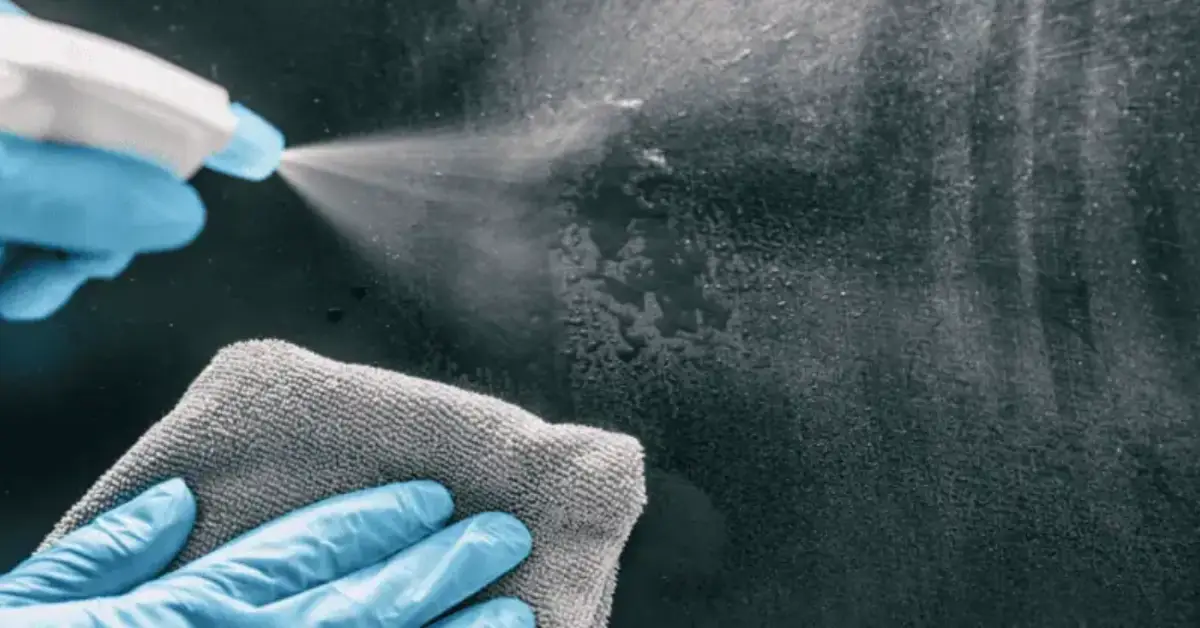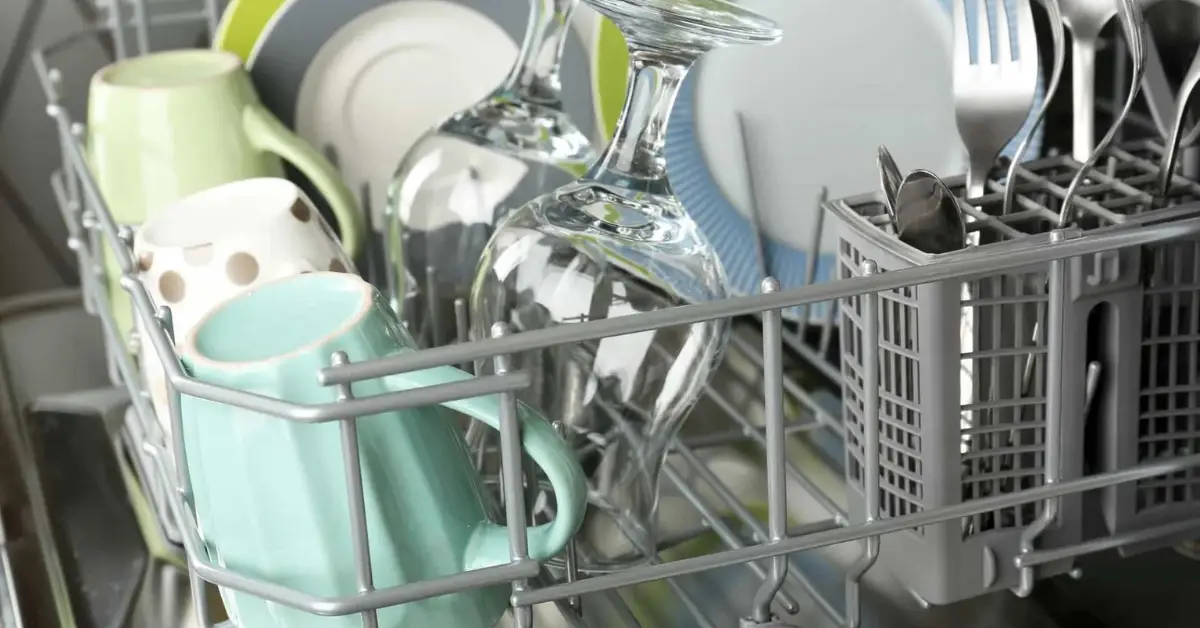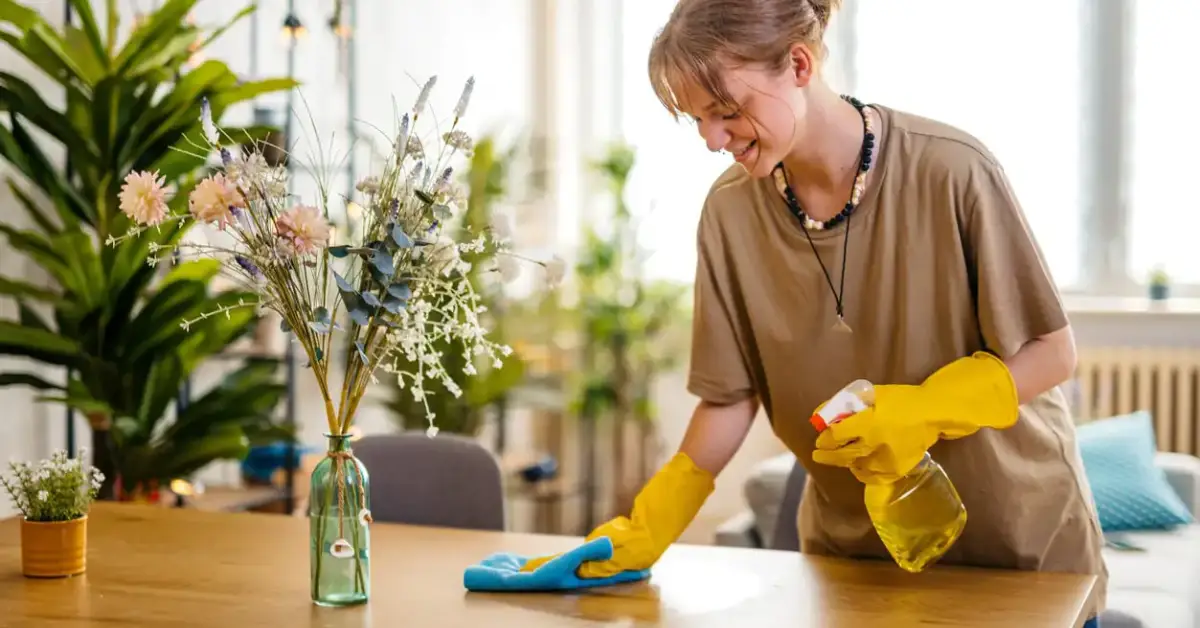Say Goodbye to These 6 Outdated Cleaning Habits
I used to think a strong bleach smell meant my home was truly clean. Then I noticed the “clean” counters felt sticky by evening, my throat got scratchy, and the same grime kept coming back. That’s when it hit me: it wasn’t the effort—it was a few old habits quietly undoing the work.
You and I were taught shortcuts that feel right—spray and wipe fast, add extra detergent “for good measure,” use one trusty sponge for everything. The result? Residue that attracts dirt, germs spread between rooms, and indoor air that doesn’t feel great to breathe.
This piece is about dropping six outdated moves and replacing them with simple, safer swaps that actually work. You’ll clean less, protect your surfaces, and make your home feel fresher—without harsh routines or extra products.
Before we dive in, be honest: which habit do you think is sabotaging your clean right now—quick spray-and-wipe, too much soap, or cleaning with tired tools?
Instant Snapshot – The 6 Habits at a Glance
Before we break each one down, here’s a quick look at the six habits most people (including me once) rely on — and why they actually make your home less healthy:
- Spraying and wiping disinfectant immediately – Kills fewer germs because it never gets enough time to work.
- Using too much cleaner or detergent – Leaves sticky residue that attracts dirt and irritates skin or airways.
- Cleaning with dirty tools – Spreads grime and bacteria instead of removing them.
- Overloading appliances like dishwashers – Blocks water and heat flow, meaning dishes and clothes stay unclean.
- Ignoring hidden touchpoints – Germs love doorknobs, remotes, and light switches—yet we skip them most often.
- Using one-size-fits-all harsh cleaners – Damages surfaces, harms indoor air, and wastes money.
If even one of these sounds familiar, don’t worry—you’re not alone. Let’s start with the biggest myth of all: that faster cleaning means cleaner results.
Habit 1: Wiping Disinfectant Immediately

I used to spray cleaner on the counter and wipe it away within seconds, proud of how fast the surface gleamed. But what I didn’t realize was that I’d just made my cleaning look good, not be good. Most disinfectants only kill germs if they stay wet on the surface for several minutes. When you wipe too soon, you’re basically giving bacteria a free pass to stick around.
Here’s why that habit backfires:
- Incomplete disinfection: Germs need “contact time” to die. Wiping right away leaves behind live colonies you can’t see.
- Chemical waste: You end up spraying more product to feel “clean,” which just coats surfaces with residue.
- False sense of safety: Shiny counters can still carry microbes that trigger allergies or minor infections later.
A better approach? Slow down your spray game. After spraying, let the product sit for the time mentioned on its label—usually one to ten minutes. You can even set a small timer or clean another area while it works. When you come back and wipe, you’re removing both dirt and germs effectively.
Many cleaning experts, like those at The Spruce, emphasize the same thing: disinfectants don’t work instantly; they need dwell time to do their job. Once I started following that rule, my kitchen actually stayed fresh longer—no more sticky film, no repeat wiping.
Try this small change once, and you’ll feel the difference. You’ll clean less often, breathe easier, and finally get the kind of clean that lasts.
Habit 2: Using Too Much Cleaner or Detergent
I used to think that if a little bit of cleaner worked well, then using more would make everything spotless faster. Turns out, that logic backfires. When you pour in extra detergent or go heavy on cleaning spray, the residue that’s left behind does the opposite—it attracts more dirt and grime.
Here’s what really happens when you overdo it:
- Residue buildup: Surfaces stay sticky, which traps dust faster.
- Chemical exposure: Breathing in or touching leftover cleaner can irritate skin or airways.
- Wasted money: You use more product than needed, but the space still looks dull by the next day.
I learned this the hard way after overloading my laundry detergent and ending up with stiff towels that never smelled clean. The trick? Less is genuinely more. Always measure your cleaner per the label instructions, and if it says to dilute—do it. That ratio is tested for a reason.
Different materials need different care, too:
- Wood can lose its finish if over-sprayed.
- Fabrics hold onto soap, making them rough or dull.
- Tile or glass can develop streaks that are hard to remove later.
As cleaning pros at Good Housekeeping explain, using too much cleaner doesn’t equal better cleaning—it just makes more mess to deal with. Once you cut back, your surfaces will dry faster, look brighter, and your home will feel cleaner for longer.
Habit 3: Cleaning with Dirty Tools
We all have that favorite sponge or mop that we use for everything. I had one, too—until I realized I was spreading yesterday’s bacteria across every room. A dirty cleaning tool can undo an hour of effort in minutes.
When you keep reusing unwashed sponges, cloths, or mop heads:
- Germs travel freely from one surface to another.
- Smells linger because you’re not removing grime, just moving it.
- Mold and bacteria thrive in damp tools that never fully dry.
The fix is easy once you make it a routine:
- Assign specific tools to certain tasks—kitchen, bathroom, and general surfaces.
- Sanitize weekly: microwave your sponge for 30 seconds (if safe), wash rags in hot water, and disinfect mop heads.
- Dry tools completely before storing them to stop bacteria from growing.
You’ll be amazed at how fresh everything feels when your tools start clean. It’s a small shift, but one that makes your cleaning actually work. start clean. It’s a small shift, but one that makes your cleaning actually work. If you want to see what other everyday routines might be secretly backfiring, check out our guide on 8 Cleaning Mistakes That Are Making Your Home Dirtier.
Habit 4: Overloading the Dishwasher & Misusing Appliances

I used to cram every plate, cup, and spoon into one dishwasher load—thinking I was saving time and water. Instead, I was running the same load twice because half the dishes came out cloudy or greasy. When appliances are packed too tightly, water and air can’t circulate properly, leaving everything only half-clean.
Here’s what happens when you overload:
- Dishes and clothes stay dirty: blocked jets and poor detergent reach.
- Appliance wear and tear: overworking motors shortens their life.
- Wasted energy and time: you run extra cycles to fix the first one.
Beyond crowding, many people also skip cleaning filters, seals, and vents—those hidden areas where grime and bacteria build up. Whether it’s your dishwasher, washing machine, or even the fridge, ignoring the inside maintenance can lead to poor performance and bad odors.
A better habit? Leave space for airflow and clean your appliances monthly. Rotate items, wipe seals, and clear filters—it takes minutes but keeps everything efficient.
As Southern Living points out , overloading dishwashers doesn’t just make them less effective—it actually wastes energy and creates more work later. Once you give your machines room to breathe, they’ll thank you by lasting longer and cleaning better.
Try running your next load with some breathing space—you’ll see the shine difference right away.
Habit 5: Ignoring Hidden or High-Touch Surfaces
When you think of cleaning, you probably picture counters, floors, and maybe the bathroom sink. But what about the doorknobs, light switches, TV remotes, and faucet handles? I used to overlook them, too—until I caught a cold twice in one month and realized my “clean” home wasn’t as safe as it looked.
These small, high-touch areas are germ magnets. We touch them dozens of times a day without noticing—especially between washing hands, cooking, or scrolling on our phones. Over time, these spots quietly spread bacteria and viruses through the entire home.
Here’s what people often forget:
- Doorknobs and handles: touched constantly, rarely wiped.
- Light switches and remotes: collect oils and bacteria from fingers.
- Faucet handles and vents: trap dust and moisture, creating a breeding ground for microbes.
To fix it, build a simple system that actually fits into your day:
- Rotate daily targets: clean one room’s touchpoints each day instead of doing it all at once.
- Use disinfectant wipes or microfiber cloths: quick passes prevent buildup.
- Create a visual checklist: stick it inside a cupboard door as a gentle reminder.
- Bonus trick: shine a UV flashlight or use a “glo germ” powder once—seeing what glows under the light will change how you clean forever.
Habit 6: Clinging to One-Size-Fits-All Harsh Cleaners
If your cleaning shelf looks like a mini chemistry lab, you’re not alone. For years, I relied on bleach and strong sprays for every surface—countertops, floors, even wood tables. It smelled “clean,” but slowly, finishes dulled, my hands got dry, and the air started to sting after cleaning sessions.
Here’s the truth: not all cleaners suit every job. Using one harsh solution for everything might save time now but costs you later—in damaged surfaces and irritated lungs.
Why it’s risky:
- Surface damage: acids and bleach strip finishes from wood and stone.
- Poor indoor air: fumes linger, especially in closed spaces.
- Chemical reactions: mixing cleaners (like bleach and vinegar) can create toxic gases.
- Health impact: strong products irritate skin and breathing passages.
A smarter way forward:
- Match pH to the task: alkaline for grease, acidic for mineral stains.
- Try enzyme-based or plant-based cleaners: effective but gentler on surfaces and air.
- Use steam or microfiber for natural disinfection.
- Always spot-test first—especially on marble, metal, or fabric.
Transition Plan – How to Break Those Six Habits

Reading about habits is one thing; breaking them is another. The goal isn’t to overhaul your entire routine overnight—it’s to make one small swap at a time until it sticks.
Here’s how I’ve made it work (and how you can, too):
- Pick one habit per week. Focus on it daily until it feels automatic before moving to the next.
- Use triggers you already have. For example, wipe high-touch spots every time you turn off lights at night.
- Track progress visibly. A simple checklist on the fridge or a phone reminder keeps you consistent.
- Swap tools, not time. Replace your old sponge with color-coded cloths or switch to refillable cleaners—you’ll clean smarter without spending longer.
- Reward consistency. Light a candle, play music, or take that post-clean coffee break—positive cues help habits stick.
You’ll notice within weeks that cleaning feels less like a chore and more like maintenance. Your air will smell lighter, surfaces will stay cleaner longer, and you won’t need to deep-clean as often.
If you had to start with just one, which habit would you drop first? For a gentler, chemical-free clean, try some of the 8 Must-Try Vinegar and Baking Soda Hacks that actually work and cost almost nothing.
Quick Habit Cheatsheet – Your 6-Step Clean-Smarter Guide
Here’s a simple cheatsheet you can print, pin, or screenshot — a one-page reminder to help you ditch the old and build cleaner habits that last.
| Old Habit | Why It’s Harmful | Healthier Swap |
|---|---|---|
| 1. Wiping disinfectant immediately | Germs survive because cleaner doesn’t stay wet long enough. | Let it sit 5–10 minutes before wiping. |
| 2. Using too much cleaner or detergent | Residue attracts more dirt and irritates skin. | Measure as per label; dilute if needed. |
| 3. Cleaning with dirty tools | Spreads bacteria between rooms. | Wash, disinfect, and dry tools weekly. |
| 4. Overloading dishwasher/appliances | Blocks water and airflow, leaving items dirty. | Leave space between items; clean filters often. |
| 5. Ignoring high-touch surfaces | Doorknobs and remotes collect hidden germs. | Wipe one “touch zone” daily on rotation. |
| 6. Using harsh all-purpose cleaners | Damages surfaces, pollutes indoor air. | Use pH-appropriate or plant-based alternatives. |
30-Day Habit Reset Idea:
- Week 1: Fix disinfectant timing.
- Week 2: Cut cleaner quantities in half.
- Week 3: Deep-clean your tools and appliances.
- Week 4: Add high-touch wipes and switch to gentler products.
By the end of the month, you’ll clean faster, breathe easier, and your home will actually feel lighter. Once you’ve nailed these basics, have some fun testing viral tricks—these 10 TikTok Home Cleaning Tips That’ll Blow Your Mind and Actually Work are surprisingly practical.
Final Recap
If there’s one thing I’ve learned, it’s that a healthy home isn’t built by scrubbing harder — it’s built by cleaning smarter. Drop the habits that quietly undo your work, and replace them with simple steps that make your space genuinely safe and calm.
Here’s what to remember:
- Pause before you wipe. Let disinfectants do their job.
- Use less product, but use it right.
- Start with clean tools, not just clean intentions.
- Treat your surfaces kindly, and they’ll last longer.
By next month, your home can feel cleaner, your air fresher, and your routine lighter — all without adding a single extra chore.
Now it’s your turn: which habit are you ready to ditch first? Share your thoughts in the comments, or tell me how your cleaning routine has changed.
For more real-life home tips and smart cleaning ideas, visit Build Like New — where better living starts with simple changes that actually work.
Disclaimer: The cleaning tips and product suggestions in this article are for general informational purposes only. Always follow manufacturer instructions and test products on a small area before use. Build Like New is not responsible for any surface damage or reactions caused by improper product use.


